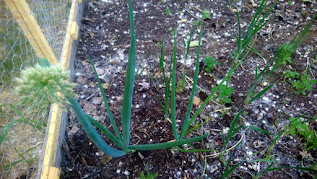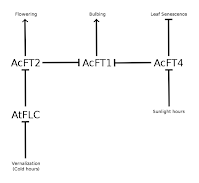Male sterile plants are an incredibly important piece of classical biotechnology. (To be clear, they're not the result of "genetic engineering".) They allow the efficient production of hybrid varieties, which dominate the corn, rice, sunflowers, etc. markets because of their high productivity (due to heterosis, hybrid vigor) and consistency (due to genetic uniformity).
Without male-sterile genetics a seed producer has to prevent pollen from one parent from being transferred to the other parent, somehow. This is time-consuming and arduous work (like detasseling corn), or was simply impossible (like with wheat). With male-sterile genetics there is no pollen to worry about in one parent, so there is no need for intensive efforts to prevent pollen transfer. All a seed producer has to do is grow the male-sterile plant inter-cropped with the intended pollen-donor, then collect seeds only from the male-sterile plant. Every seed will be a hybrid. It's as simple as that!
Most male-sterile mutations can be found in cytoplasmic DNA. The mutations can be found sporadically or generated by various experimental methods. With cytoplasmic-male-sterile mutants, all progeny of the plant will also be male-sterile. Once they have been found, they can be introduced into any variety (with some effort) by traditional breeding methods.
We start with a target variety (pink in diagram at left) that produces normal pollen and a source variety with a cytoplasmic-male-sterile trait (yellow in diagram at right). We cross the two varieties, with the first variety as the pollen-donor. The resulting seeds all carry the male-sterile trait, but only 50% of their genetics are like the target variety.
We cross the resulting plants back to the target variety and the new seeds will share 75% of their genetics with the target variety. If we do this backcross again, the next generation will be 87.5% identical to the target variety. (Then 93.75%, then 96.875%, then 98.4375%.) Each generation brings our male-sterile plants closer and closer (by 50% of remaining difference) to our target variety. Eventually the only difference between our target variety and the male-sterile plants is the male-sterility trait itself.
At this point, we've made a male-sterile version of our initial target variety. It can then be used in making large numbers of F1 hybrid seed. As long as the original target variety is maintained, the male-sterile version of that variety can also be maintained by continuing to cross with it.
Less commonly, a male-sterile mutation can be found in nuclear DNA. These are also called genetic-male-sterility and are harder to work with because they're usually recessive. With recessive traits (male-sterile or otherwise), you have to do test selfings every two generations in order to be sure you can re-capture the double-recessive individuals for the next back-cross generation.
In the figure at right, I have each circle labeled with their genotype with respect to the recessive male-sterile trait. ("msms" is the genotype corresponding to the male-sterile phenotype.) Each circle is filled in yellow and pink to represent the contribution from the genomes of the initial strains, as in the previous figure.
As a result of the additional complexity of maintaining and using male-sterile traits caused by nuclear mutations, very few varieties have been developed using them. (A couple are mentioned in [link].) As soon as a cytoplasmic-male-sterile trait is found or made for a species, it would become the trait of choice by seed producers.
The utility of any male-sterile trait is limited to those who are trying to produce large numbers of consistent F1 hybrid seed. These traits would be neutral or positive for home gardeners who don't save seed from year to year. (Positive because they're cheaper to produce than regular F1 seed.) Anyone who saves seed from year to year, from home-gardeners to amateur plant breeders like myself, would probably find the traits annoying and want to avoid them.
With the small number of plants in each generation that I have space to grow for most of my projects, I really don't want a few (or most (or all)) of them to be partly sterile. Fortunately, like any other negative trait, you can select against it if it does turn up in your plant breeding projects and it will soon cease to be a significant issue for you.
References:
Without male-sterile genetics a seed producer has to prevent pollen from one parent from being transferred to the other parent, somehow. This is time-consuming and arduous work (like detasseling corn), or was simply impossible (like with wheat). With male-sterile genetics there is no pollen to worry about in one parent, so there is no need for intensive efforts to prevent pollen transfer. All a seed producer has to do is grow the male-sterile plant inter-cropped with the intended pollen-donor, then collect seeds only from the male-sterile plant. Every seed will be a hybrid. It's as simple as that!
Most male-sterile mutations can be found in cytoplasmic DNA. The mutations can be found sporadically or generated by various experimental methods. With cytoplasmic-male-sterile mutants, all progeny of the plant will also be male-sterile. Once they have been found, they can be introduced into any variety (with some effort) by traditional breeding methods.
![[no title] At the top are two circles. Yellow at left, with a female symbol beside it; pink at right, with a male & female symbol beside it. Immediately below them, halfway betwen, is another circle representing a hybrid of the above circles. This one is half yellow and half pink, to illustrate the genetic contribution from the parents in the top row. There is only a female symbol beside this circle. There are eleven further circles below. Each is placed horizontally halfway between the previous hybrid and the original pink circle. In each subsequent hybrid circle, the proportion of yellow (as a pie diagram slice) is reduced by half. All the subsequent hybrid circles only have the female symbol beside them. The very bottom circle is filled entirely in pink, representing a male-sterile version of the original [pink] variety.](https://1.bp.blogspot.com/-jCp0Gm90M50/WrBLW7poEtI/AAAAAAAAGXA/EAi3FUL2CIEzOIHZiwue1aLXBOM7aUQ-ACLcBGAs/s320/male-sterile-strain-construction_2.png) |
| Fig 1. |
We cross the resulting plants back to the target variety and the new seeds will share 75% of their genetics with the target variety. If we do this backcross again, the next generation will be 87.5% identical to the target variety. (Then 93.75%, then 96.875%, then 98.4375%.) Each generation brings our male-sterile plants closer and closer (by 50% of remaining difference) to our target variety. Eventually the only difference between our target variety and the male-sterile plants is the male-sterility trait itself.
At this point, we've made a male-sterile version of our initial target variety. It can then be used in making large numbers of F1 hybrid seed. As long as the original target variety is maintained, the male-sterile version of that variety can also be maintained by continuing to cross with it.
The figure was drawn from a vague memory of a similar figure illustrating conversion of a sunflower variety into a male-sterile version. I saw the figure years ago and I think it was associated with some USDA research. I wasn't able to find it while writing this, but I'll add a note here with the citation/link if I come across it later. The original author/artist deserves the credit for the method of visualizing the illustrated concept.
(The figure also illustrates the process of introducing any single dominant trait into a target variety via recurrent back-crossing, with dominant-carrying individuals chosen at each generation. With recessive traits, it is more complicated.)
| Fig 2. |
In the figure at right, I have each circle labeled with their genotype with respect to the recessive male-sterile trait. ("msms" is the genotype corresponding to the male-sterile phenotype.) Each circle is filled in yellow and pink to represent the contribution from the genomes of the initial strains, as in the previous figure.
As a result of the additional complexity of maintaining and using male-sterile traits caused by nuclear mutations, very few varieties have been developed using them. (A couple are mentioned in [link].) As soon as a cytoplasmic-male-sterile trait is found or made for a species, it would become the trait of choice by seed producers.
The utility of any male-sterile trait is limited to those who are trying to produce large numbers of consistent F1 hybrid seed. These traits would be neutral or positive for home gardeners who don't save seed from year to year. (Positive because they're cheaper to produce than regular F1 seed.) Anyone who saves seed from year to year, from home-gardeners to amateur plant breeders like myself, would probably find the traits annoying and want to avoid them.
With the small number of plants in each generation that I have space to grow for most of my projects, I really don't want a few (or most (or all)) of them to be partly sterile. Fortunately, like any other negative trait, you can select against it if it does turn up in your plant breeding projects and it will soon cease to be a significant issue for you.
References:
- Corn:
- Historical Corn Grain Yields: www.agry.purdue.edu/ext/corn/news/timeless/yieldtrends.html
- Maize is a Machine: thescientistgardener.blogspot.com/2010/12/maize-is-machine.html
- Hybrid types:
- Double-cross hybrids: passel.unl.edu/pages/informationmodule.php?idinformationmodule=1099683867&topicorder=5
- Single-cross hybrids: passel.unl.edu/pages/informationmodule.php?idinformationmodule=1099683867&topicorder=4
- Heterosis: en.wikipedia.org/wiki/Heterosis
- Male sterility:
- en.wikipedia.org/wiki/Cytoplasmic_male_sterility
- www.agriinfo.in/default.aspx?page=topic&superid=3&topicid=1776
- www.ncbi.nlm.nih.gov/pmc/articles/PMC5057354/
- pdfs.semanticscholar.org/e2dc/a796ace3ad12cd75969eee68cd36e34c2b78.pdf
- Detasseling corn: en.wikipedia.org/wiki/Detasseling
- Backcrossing:




